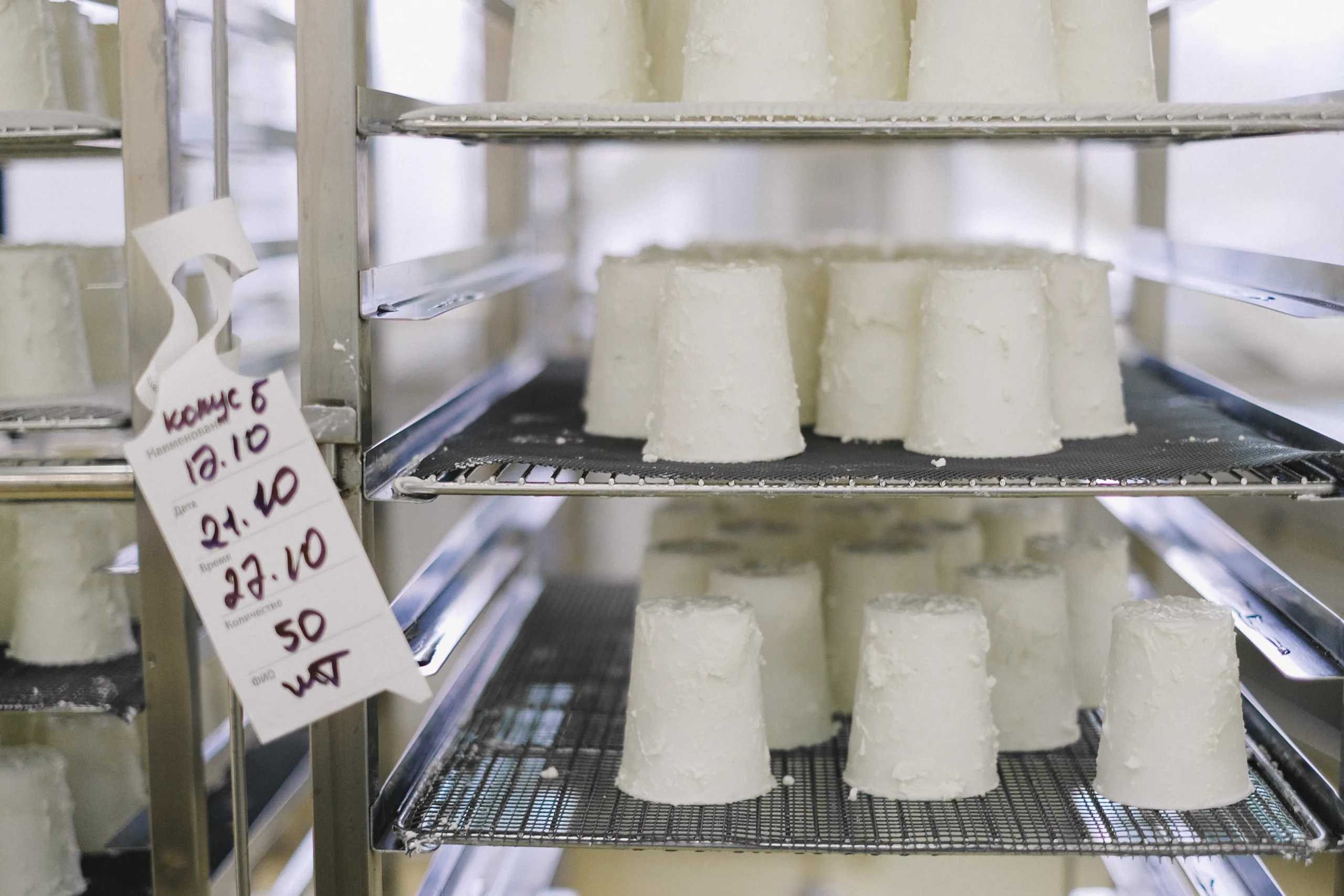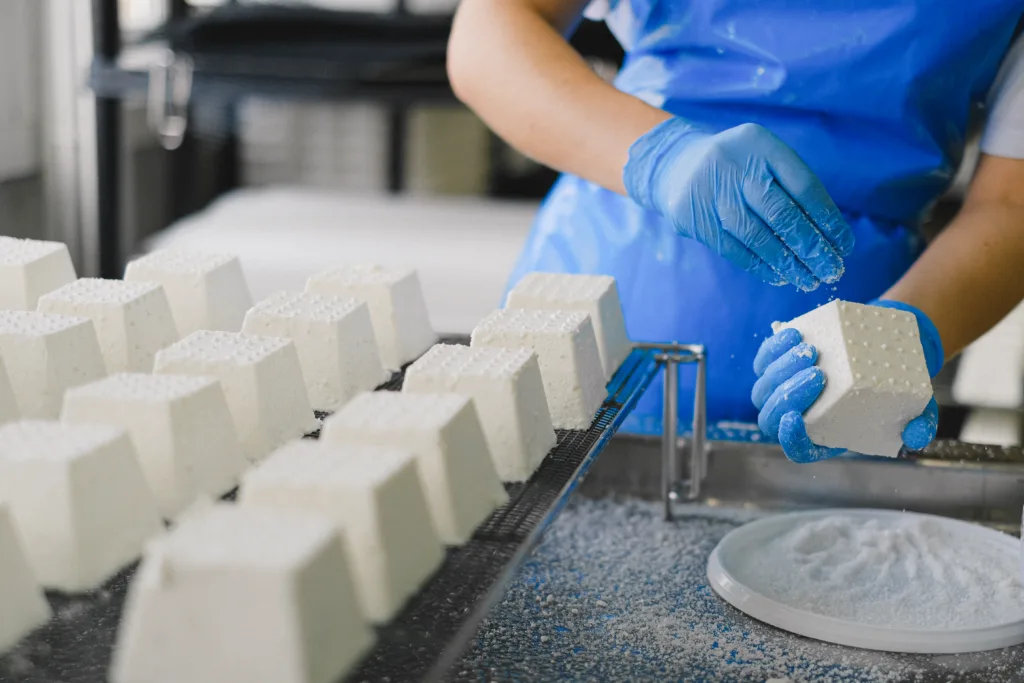Ricotta cheese is a staple ingredient in many classic Italian dishes, and a favorite topping for toast and crackers. But can ricotta cheese be consumed on a low FODMAP diet?
If you suffer from irritable bowel syndrome (IBS) or other digestive disorders, following the low FODMAP diet can help you manage your symptoms. But it can also be confusing to figure out which foods are low FODMAP, especially when it comes to cheese. In this article, we’ll take a look at whether ricotta cheese is low FODMAP and how it fits into your meal plan.
Ricotta cheese is a type of Italian whey cheese made from sheep, cow, goat, or Italian water buffalo milk whey left over from the production of other cheeses.
Ricotta Cheese Low Fodmap?
Ricotta cheese is generally considered low FODMAP, which means it is safe to consume for many people with IBS. The cheese itself contains minimal amounts of lactose and fructans, so it should be well tolerated by most people on a low FODMAP diet. However, there are some variations of ricotta cheese that may contain higher amounts of lactose or other fructan-containing ingredients, so it is important to read the label carefully when purchasing ricotta cheese. Additionally, some brands of ricotta cheese may be made with cow’s milk that contains higher levels of lactose than other types of dairy products. So if you are following a strict low FODMAP diet, it is best to choose a ricotta cheese that is made with sheep’s or goat’s milk.
As far as serving size goes, a small serving size (about 1/4 cup) of ricotta cheese is considered to be low FODMAP. If you are following a strict low FODMAP diet, it is best to stick to the recommended serving sizes and avoid eating large amounts of ricotta cheese in one sitting. Additionally, some recipes may call for larger amounts of ricotta cheese than what is recommended on the label. In these cases, it may be best to substitute an alternative low FODMAP ingredient or reduce the amount of ricotta used in the recipe.
Overall, ricotta cheese can be enjoyed in moderation as part of a balanced low FODMAP diet. However, it is important to read labels carefully and stick to the recommended serving sizes when eating this type of cheese.
Ingredients in Ricotta Cheese
Ricotta cheese is a staple ingredient in Italian cuisine, and it’s easy to see why. This creamy, mild-tasting cheese is made from whey, which is a byproduct of the cheesemaking process. In its most basic form, ricotta cheese is simply a combination of whey and an acidifying agent such as vinegar or lemon juice. This mixture is then heated and stirred until it forms a thick, creamy mixture that can be used in a variety of dishes. Ricotta cheese can also be made with other ingredients such as cream, eggs, herbs and spices. The added ingredients give the ricotta cheese a richer flavor and texture.
Click here to preview your posts with PRO themes ››
Ricotta cheese is also a great source of protein, calcium and other essential nutrients. It can be used as an ingredient in everything from lasagna to cannoli or even added to salads for a creamy texture. Ricotta cheese can also be used as an alternative to cream cheese or sour cream in many recipes. Whether you’re making lasagna or adding ricotta to your favorite baked goods, this versatile cheese will give your dish an extra boost of flavor and nutrition.
Health Benefits of Eating Ricotta Cheese
Ricotta cheese is a popular cheese in many parts of the world, particularly in Italian cuisine. It is a dairy product made from whey left over from the production of other cheeses and is often used as a filling for lasagna, ravioli and many other dishes. Ricotta cheese has numerous health benefits due to its high content of essential nutrients and vitamins.
One of the main health benefits associated with ricotta cheese is its high protein content. Protein is an important nutrient that helps promote muscle growth and repair and can help reduce hunger between meals. Ricotta cheese also contains significant amounts of calcium, which helps keep bones strong and healthy. Additionally, calcium plays an important role in maintaining healthy blood pressure levels.
Ricotta cheese is also rich in B vitamins such as riboflavin, thiamine and vitamin B12, all of which are essential for good health. Riboflavin helps to ensure proper energy production and a healthy metabolism, while thiamine helps to support the nervous system. Vitamin B12 is necessary for red blood cell production and helps maintain normal nerve function.
Ricotta cheese also contains significant amounts of phosphorus, magnesium and zinc. Phosphorus helps keep teeth and bones strong while magnesium helps regulate muscle contractions, including those found in the heart muscles. Zinc is important for immune system function as well as wound healing.
In addition to its nutritional value, ricotta cheese has a pleasant taste that makes it a popular ingredient in many dishes as well as being eaten on its own with fruit or crackers. It can be used instead of cream cheese on sandwiches or added to sauces or dips for added flavor and texture. Ricotta cheese can be enjoyed by people of all ages due to its versatility and health benefits.
FODMAPs
FODMAPs are a group of short-chain carbohydrates that are poorly absorbed in the small intestine. These carbohydrates are found in many common foods, including wheat, onions, garlic, most types of beans, apples, and milk. FODMAPs can cause digestive problems such as abdominal bloating, gas, cramps, and diarrhea in people who are sensitive to them. Some people may also experience other symptoms such as headaches and fatigue. For those with a sensitivity to FODMAPs, avoiding high-FODMAP foods may help alleviate their symptoms. Low-FODMAP diets have been studied extensively and are now recommended by many health professionals as an effective way to manage digestive issues.
Click here to preview your posts with PRO themes ››

Foods High in FODMAPs
FODMAPs, or fermentable oligosaccharides, disaccharides, monosaccharides and polyols are types of carbohydrates found in certain foods. They are difficult for some people to digest and can cause digestive distress. People with irritable bowel syndrome (IBS) may find that avoiding foods high in FODMAPs helps reduce symptoms such as bloating and abdominal pain. Common foods high in FODMAPs include onions, garlic, wheat, apples, pears, milk and certain types of legumes.
Onions contain fructans, a type of FODMAP carbohydrate which can be difficult to digest. Garlic contains both fructans and galacto-oligosaccharides (GOS). Wheat is high in fructans and GOS while apples and pears contain sorbitol, a type of sugar alcohol which is also a FODMAP carbohydrate. Milk contains lactose, another type of FODMAP carbohydrate which is difficult for some people to digest. Legumes such as chickpeas and lentils are high in the FODMAP mannitol.
Although some people with IBS may find that avoiding foods containing FODMAPs helps reduce symptoms of digestive discomfort, it is important to note that these foods are also a source of important nutrients such as dietary fiber which can help support digestive health. It may be possible for someone with IBS to include small amounts of these foods in their diet without experiencing adverse effects by taking steps such as limiting portion sizes or soaking beans before cooking them to reduce their FODMAP content.
Types of Low Fodmap Cheese
Low Fodmap cheese is a great way to enjoy dairy without worrying about triggering symptoms of Irritable Bowel Syndrome (IBS). Cheese is high in calcium, protein, and other essential vitamins and minerals. However, many types of cheese are high in fructans, galactans, and other fermentable carbohydrates which can cause digestive distress for those with sensitive stomachs. Fortunately, there are a variety of low Fodmap cheeses available that are easy to digest and can be enjoyed without worry.
The most common type of low Fodmap cheese is hard cheese such as cheddar, Swiss, or Parmesan. These cheeses contain lower amounts of fermentable carbohydrates than soft cheeses like Brie or Camembert. Hard cheese can be used in sandwiches, salads, or as a topping on pizza.
Another type of low Fodmap cheese is cottage cheese. Cottage cheese is made from curdled milk and contains no added sugars or sweeteners. It’s an excellent source of protein and calcium and can be used to make dips, salads, or even desserts.
Goat’s milk cheese is another great option for those following a low Fodmap diet. Goat’s milk has less lactose than cow’s milk, making it easier to digest for those with IBS. Goat’s milk cheeses such as feta or chèvre are delicious options for adding flavor to salads or pastas.
Finally, cream cheese is an excellent source of calcium and protein that can be enjoyed on its own or used to make spreads or sauces. Cream cheese typically contains less lactose than other dairy products so it may be easier to digest for those with IBS symptoms due to its lower fructose content.
Click here to preview your posts with PRO themes ››
In conclusion, there are a variety of low Fodmap cheeses available that make it easy to enjoy dairy without triggering symptoms of IBS. From hard cheeses like cheddar and Parmesan to goat’s milk feta and cream cheese spreads – there are plenty of delicious options for those following a low Fodmap diet!
Incorporating Low Fodmap Cheese into Your Diet
Cheese is a delicious and versatile food that can add flavor and texture to any dish. However, many people with digestive issues, such as irritable bowel syndrome (IBS), have difficulty tolerating certain types of cheese. Fortunately, there are several low FODMAP cheeses that can be incorporated into your diet without triggering symptoms.
Choose the Right Cheese
When selecting cheese for a low FODMAP diet, you will want to choose cheeses that are aged for at least 60 days or more. Aged cheeses contain fewer FODMAPs than fresh cheeses, so they are easier to digest. Some examples of aged low FODMAP cheeses include cheddar, Swiss, Gouda, Parmesan, and blue cheese. You should also avoid soft cheeses such as Brie or Camembert since they tend to be higher in FODMAPs.
Portion Control
When eating cheese on a low FODMAP diet it is important to be mindful of your portion size. A good rule of thumb is to keep your portions of cheese small – about the size of your thumb or two tablespoons – per meal. Eating too much cheese can trigger digestive issues in some people with IBS. It is also a good idea to pair your cheese with high-fiber foods such as vegetables and whole grains which can help reduce symptoms associated with consuming dairy products.
Try Different Preparations
There are many ways to incorporate low FODMAP cheese into your diet beyond just eating it plain or on crackers. For instance, you can use grated Parmesan or cheddar in salads and sandwiches for extra flavor and crunch. You can also incorporate them into dishes like omelets, quiches, pizzas, macaroni and cheese or casseroles for added flavor and texture.
Incorporating low FODMAP cheese into your diet can help you enjoy all the delicious flavors of dairy without having to worry about triggering IBS symptoms. Just remember to choose aged cheeses in moderate portions paired with high-fiber foods for best results!

Conclusion
Ricotta cheese is generally considered to be low FODMAP. It contains only trace amounts of lactose, so it should be safe for most people on a low FODMAP diet. However, it is important to note that ricotta cheese can contain added ingredients such as thickeners or stabilizers, which may contain FODMAPs. Therefore, it is important to read labels carefully before consuming any ricotta cheese product. Additionally, ricotta cheese is high in fat and calories, so it should be eaten in moderation.
Overall, ricotta cheese can be a great addition to a low FODMAP diet. It is a good source of protein and calcium and can add flavor and texture to many dishes. However, it is important to read labels carefully to ensure that the product does not contain any added ingredients that may trigger symptoms for those with IBS or other digestive conditions.

